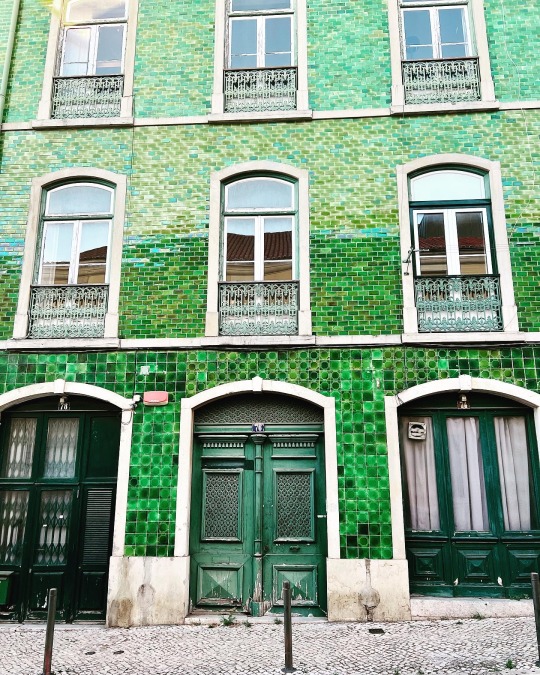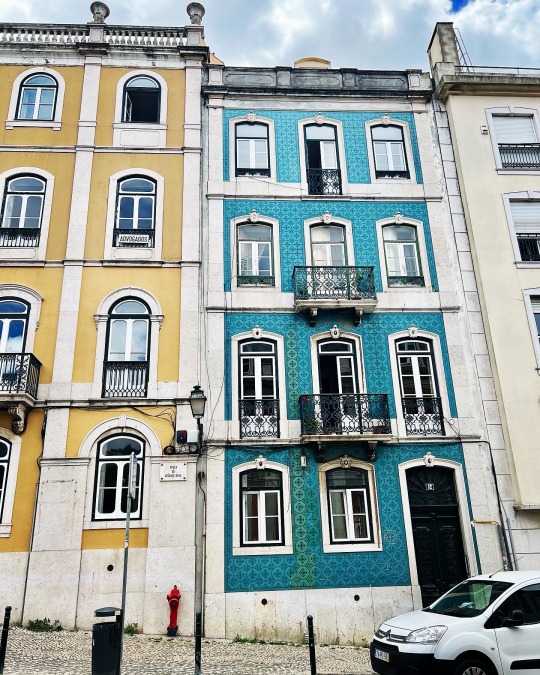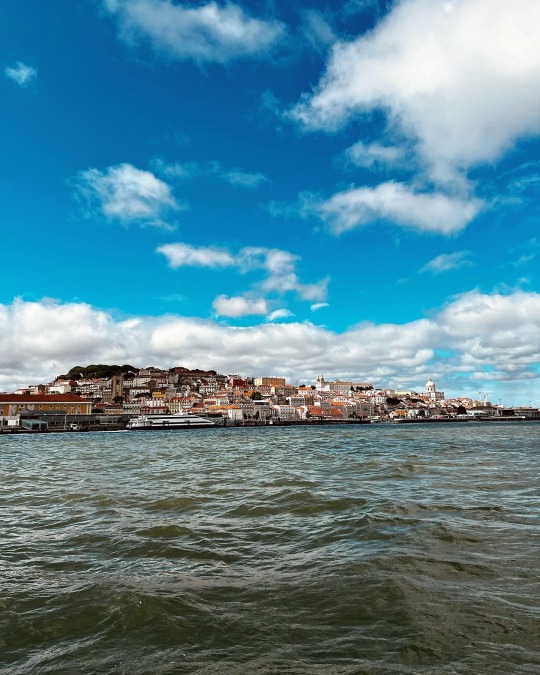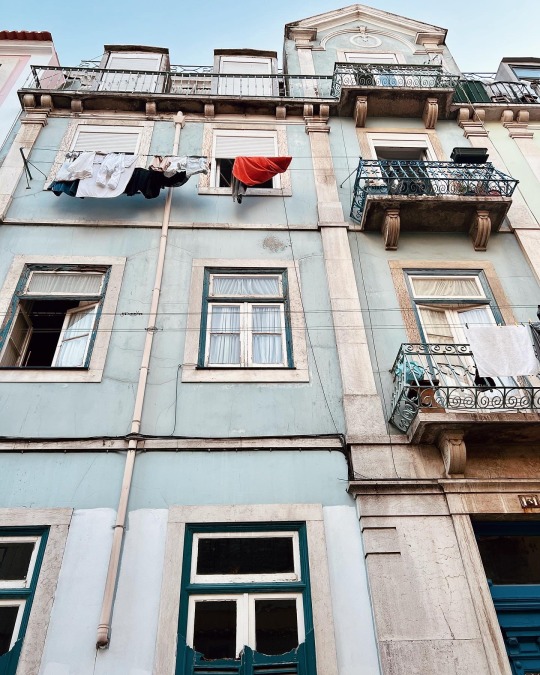Text

Capela das Almas, Porto 💙💒
📍Porto, Portugal 🇵🇹
�� @lucie.auguste
21 notes
·
View notes
Text

Camões School in Lisbon, Portugal
Portuguese vintage postcard
3 notes
·
View notes
Text


Cat on a tile roof. 4 years ago today in Odeceixe, Portugal. It had to be pretty warm up there. Also: beans!
6K notes
·
View notes
Text
Spanish palabra, French parole, and Catalan paraula all stem from Latin parabola ('word'; earlier 'comparison; parable; speech'), a borrowing from Ancient Greek παραβολή (parabolḗ). Click the video to hear and see how palabra, parola and other Romance descendants of parabola arose step by step.
97 notes
·
View notes
Text

More Portuguese tiles from Fuzeta. This pattern is relatively common, but not on this colour.
75 notes
·
View notes
Text
Alguma dúvida?
The difference between: Algo/Alguém/Algum/Alguma/Alguns/Algumas
Algo
This refers to a thing be it tangible or intangible.
In English we use: “something”
Quer comer algo?
Alguém
This refers to an unspecified person.
In English we use: “someone”
Alguém pode me ajudar?
Algum/Alguma/Alguns/Algumas
This follows a noun to convey an unspecified quantity.
In English we use: “some”
*These are all the same word but in the masculine OR feminine and the singular OR plural form*
Alguns assuntos (são mais complicados que outros)
Source: As Portuguese is not my native language, I have taken the examples from the Youtube chanel Speaking Brazilian. I recommend this channel and Virginia Langhammer very highly.https://www.youtube.com/watch?v=RlC0Y7D-mgo
45 notes
·
View notes
Text


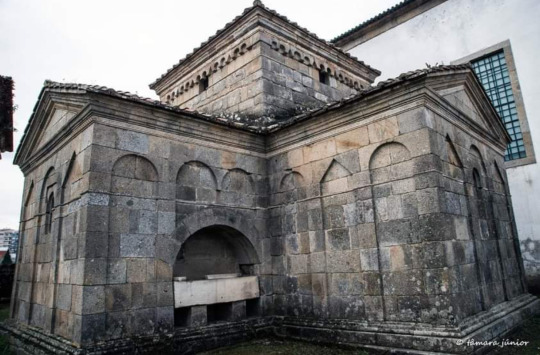
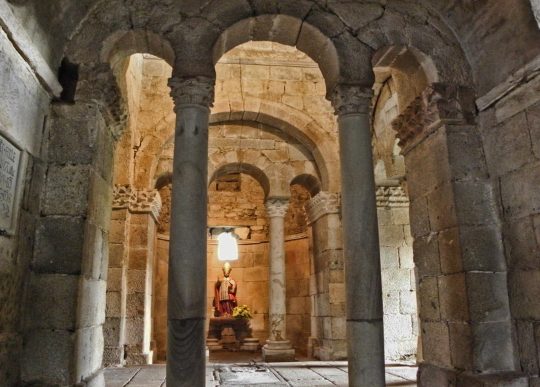
Capela de São Frutuoso de Montélios | Chapel of Fructuosus of Montélios (Portugal)
This early Middle Ages chapel is located in Real, Braga, and it is a unique example of Roman-Byzantine art in Portugal. It features a centralized area, with four apses articulated around a quadrangular cross (Greek cross). Right next to it, the Convent of São Francisco, from the 17th century, maintained the chapel as an annex. The monastic complex around was much larger, as it was the religious center of the region at the time. At the beginning of the 16th century, it would have succumbed, when the works of rebuilding the Monastery were carried out by the Franciscans.
The date of construction is not clear, but the chronology goes around the beginning of the 10th century, when the cult of the bishop Fructuosus was renewed, within the scope of the repopulation of King Afonso III of Portugal. During the Visigoth period, Fructuosus, the Bishop of Dumio and Archbishop of Braga (died in 665), chose to be buried there, in the 60s of the 7th century. The site of the chapel was, around 560 A.D., the location of a small Roman villa and, likely, a temple dedicated to the god Asclepius. The toponym "Montélios" means "Monte Pequeno" (small hill).
15 notes
·
View notes
Text
youtube
Master the verb “to be” in European Portuguese
#portuguese#european portuguese#portuguese langblr#portuguese language#langblog#langblr#language#learn portuguese
1 note
·
View note
Text
youtube
Learn how to pronounce some common foreign words the way Portuguese people do
#portuguese#european portuguese#portuguese langblr#portuguese language#langblog#langblr#language#learn portuguese
1 note
·
View note
Text
Learning European Portuguese and need more listening practice? Watch this documentary by Rui and Joel from Practice Portuguese. It’s about their journey along the Caminho de Santiago
#portuguese#european portuguese#portuguese langblr#portuguese language#langblog#langblr#portugal#language#learn portuguese#portuguese youtube#portuguese listening practice#practice portuguese
3 notes
·
View notes
Text
Portuguese has two words for the verb "to be", estar which corresponds etymologically to our word "stand" (temporary), and ser which corresponds etymologically to our word "sit" (permanent).*
Feelings, for instance, are expressed with estar, because they are temporary. I find this super interesting, because in the meditation I've done, we're always discouraged from using the verb "to be" with feelings (e.g. "I am sad") because it implies identification with the feeling, as though your feeling is an essential part of your being instead of just a temporary state of mind. And I always thought that was weird, because in my mind, the present tense just implied the present. "I am" to me meant "I am right now," and didn't imply anything about the future. How could it?
It turns out that Old English also had two words for "to be": beon, which implied permanence, and wesan, which was used for temporary states.** They got mashed together to create our highly irregular modern verb "to be", which has some forms taken from beon and forms taken from wesan. "Am" descends from wesan, i.e. the temporary one. I am right now.***
*This is a gross oversimplification but I liked the imagery.
**Again, gross oversimplification.
***Except of course that etymology does not actually determine the current meaning of a word. "Decimate" does not actually mean "kill one out of every ten". Words change in meaning; that's how language works. We need a catchy phrase for this, like "Phylogeny does not recapitulate ontology."
35 notes
·
View notes









